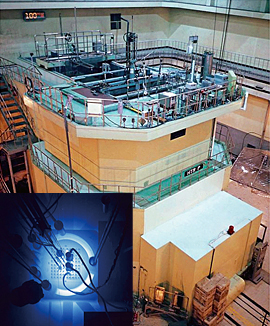
The Hitachi Training Reactor (HTR) is a purely domestic research reactor designed, manufactured, constructed and operated by pooling the collective strengths of the Hitachi Group during the dawn of Japan's nuclear energy development efforts.
HTR contributed as a pioneer of research reactors and was responsible for many outstanding achievements, including verifying the inherent safety of light water reactors (Doppler effect), the first therapeutic irradiation of brain tumors in Japan, and the education and training of engineers.
After operating for around 15 years since it first achieved criticality in 1961, the HTR was shut down in 1975. It's main facilities were dismantled by the following year.
All the spent fuels stored at the HTR was removed in 2005.
Now the radioactive waste generated by dismantling (sealed in drums or containers) are stored.
Under the approved decommissioning plan, the dismantling of idle facilities and the establishment of radioactive waste warehouses were completed by 2022.
In the future, the reactor body and the reactor building will be dismantled following the approval of changes to the decommissioning plan. Then, the radioactive waste will be stored until it is possible to carry out the radioactive waste, and after shipping out all of the waste, the restrictions on the entire radiation controlled area will be lifted.